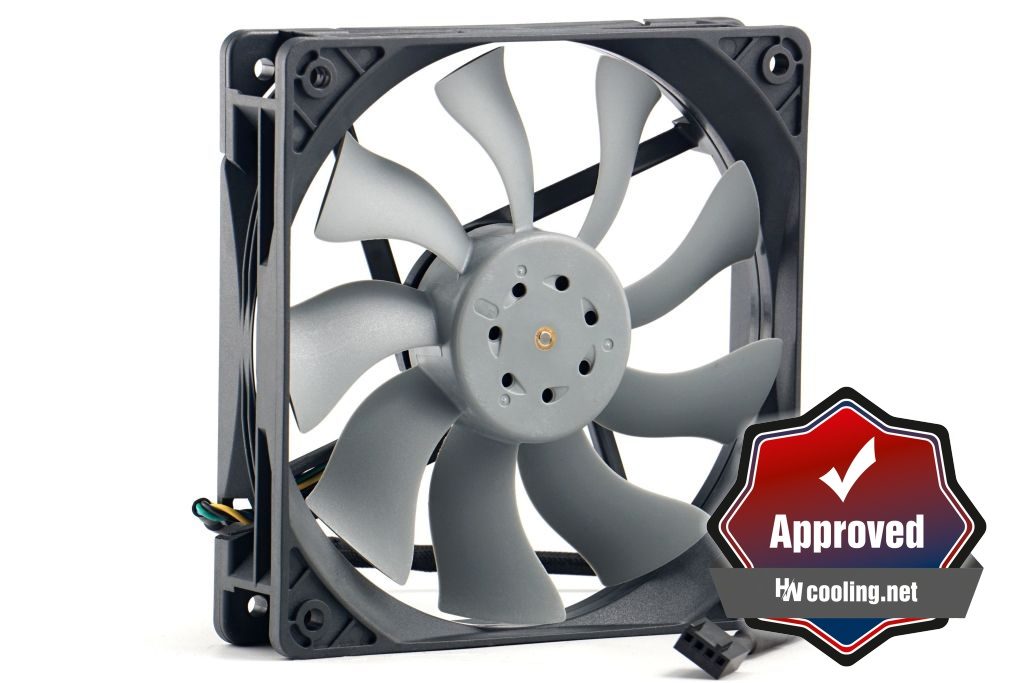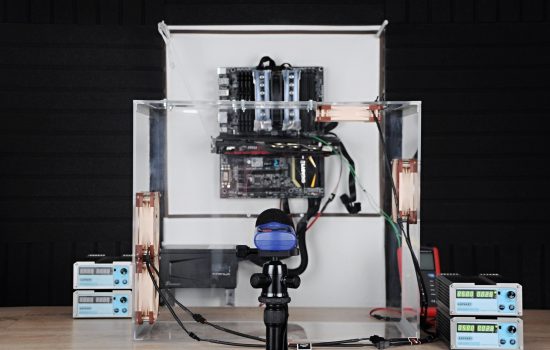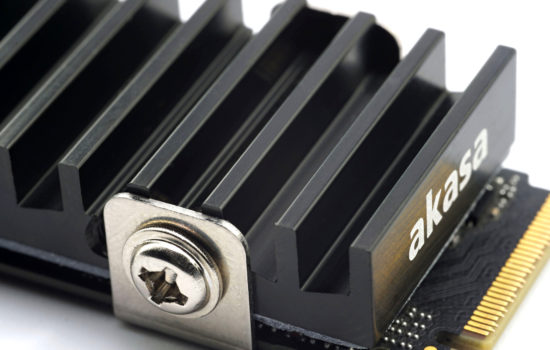Evaluation
Predisposed to more demanding industrial conditions, Akasa OTTO fans go well beyond “normal” home computer use. Complete water and dust resistance, three-phase torque and, above all, a unique vibration elimination system. The effectiveness of the proven “S-Flow” rotor is high, but there is one thing Akasa has overdone a bit. That is, if the OTTO SF12 fan is really meant for system cooling.
Evaluation
The biggest advantage of the OTTO SF12 fan is that it never transmits any vibration. And not even at high airflow, where some vibrations (mainly from turbulence) are spread even by Noctua’s super-precise fans. It’s unclear how this system built on silentblocks would work on cheaper fans that don’t have six stator slots (like this Akasa fan), but only four. This is what determines the rotor centering accuracy on the fly, which the OTTO SF12 has first-class.
With a higher concentration of stator slots, friction is also reduced and as a result, this fan is extremely power efficient. No other fan tested has less than 400 mW at this high airflow and static pressure. Therefore, the cooling power per watt coefficient is also the highest so far. The motor’s power is already extremely high, with plenty of headroom for harsh conditions, such as operating in water. Striking water is much more strenuous than air, and the motor has to work harder.
We consider the biggest drawback to be high starting and minimum speeds. The 0–2000 rpm range with fan shutdown at low PWM intensity looks good on paper, but the fan only kicks in from about 1035 rpm, which will be noisy for more demanding users. In testing, it was not even possible to adjust the speed to quieter modes (31, 33 and 36 dBA) and with a hexagonal grille, which due to its high mechanical resistance increases the noise level the most, the slowest setting even exceeded the fixed 39 dBA. Via linear (DC) control you can slow down the fan to about 925 rpm (via PWM it is 1035 rpm, starting and minimum speed do not differ with this type of control).
The higher minimum speeds are somewhat at odds with the optimal setting for system fans. For them significantly lower speeds are suitable (usually lower airflow is sufficient), and after a certain amount of airflow the noise of the whole system (especially when it consists of several fans) increases much faster than the temperature of the components decreases. Therefore, unfortunately, as a “case fan “, the OTTO SF12 does not make much sense, although at lower speeds a fan with this rotor would be suitable.
Despite the typical obstacles in cases, such as filters or grilles, the OTTO SF12 outperforms the more expensive Asus Strix ROG XF120 fan in many modes at the same noise level. Before using it with a nylon filter, however, we must warn you about the possible collision with its mesh. In some positions it may be fine, in others (typically horizontally with a hanging rotor) it can, and probably will already be rubbing off.
Performance on a thinner radiator with denser finning is average. On a thicker radiator (but with a lower FPI) the Results are a bit better compared to other fans, but still don’t particularly stand out. In short, there are more attractive models for radiators.
At lower speeds, similar to the SilentiumPC Fluctus 120 PWM, the sound is characterized by lower frequencies (150–160 Hz). At higher speeds, however, the humming sound fades away and, conversely, the OTTO SF12 sounds more pleasant at higher noise levels than similarly noisy fans with similar dBA values. In the spectrograms, you can notice several peaks with relatively small differences in the most prominent band for fans (100–500 Hz). You could get annoyed by one peak that far outweighs the others. This situation occurs somewhat with a plastic filter, where 196 Hz dominates at higher speeds. However, it is not extreme and most people will survive it.
Too bad about the high minimum speed. Otherwise, the Akasa OTTO SF12 is a very decent fan. It’s not the most efficient fan, but it doesn’t have a significant weakness and delivers balanced performance in all types of usages.The price/performance ratio is admittedly weaker, but when comparing it to other fans, it’s important to consider that the Akasa fan is both water and dust-resistant and doesn’t spread vibration even at maximum power with high airflow.
English translation and edit by Jozef Dudáš
| Akasa OTTO SF12 |
| + Suitable for every use |
| + Cooling efficiency (airflow/pressure per unit of noise) at a very high level |
| + High airflow and static pressure despite obstructive barrier |
| + At high speed, the sound is more pleasant than similarly loud fans |
| + Very low power draw considering the high performance |
| + Effective anti-vibration system. The fan does not transmit any vibrations |
| + Decent build quality |
| + Extremly powerful motor |
| + Water-resistant and dust-resistant design |
| + At lower PWM intensity the fan switches off – "passive operation" |
| - High minimum speed (from approx. 925 rpm) |
| - System fan? That one should always be quiet, well below the minimum noise level of the OTTO SF12 |
| - The sound of lower speeds includes humming frequencies. For some, they can be annoying |
| - Worse price/cooling performance ratio |
| - Mounting via rubber spikes only, screws not included |
| Approximate retail price: 22 EUR |
- Contents
- Akasa OTTO SF12 in detail
- The basis of the methodology, the wind tunnel
- Mounting and vibration measurement
- Initial warm-up and speed recording
- Base 7 equal noise levels…
- .. and sound color (frequency characteristic)
- Static pressure measurement…
- … and airflow
- Everything changes with obstacles
- How we measure power draw and motor power
- Measuring the intensity (and power draw) of lighting
- Results: Speed
- Results: Airlow w/o obstacles
- Results: Airflow through a nylon filter
- Results: Airflow through a plastic filter
- Results: Airflow through a hexagonal grille
- Results: Airflow through a thinner radiator
- Results: Airflow through a thicker radiator
- Results: Static pressure w/o obstacles
- Results: Static pressure through a nylon filter
- Results: Static pressure through a plastic filter
- Results: Static pressure through a hexagonal grille
- Results: Static pressure through a thinner radiator
- Results: Static pressure through a thicker radiator
- Results: Static pressure, efficiency by orientation
- Reality vs. specifications
- Results: Frequency response of sound w/o obstacles
- Results: Frequency response of sound with a dust filter
- Results: Frequency response of sound with a hexagonal grille
- Results: Frequency response of sound with a radiator
- Results: Vibration, in total (3D vector length)
- Results: Vibration, X-axis
- Results: Vibration, Y-axis
- Results: Vibration, Z-axis
- Results: Power draw (and motor power)
- Results: Cooling performance per watt, airflow
- Results: Cooling performance per watt, static pressure
- Airflow per euro
- Static pressure per euro
- Results: Lighting – LED luminance and power draw
- Results: LED to motor power draw ratio
- Evaluation












